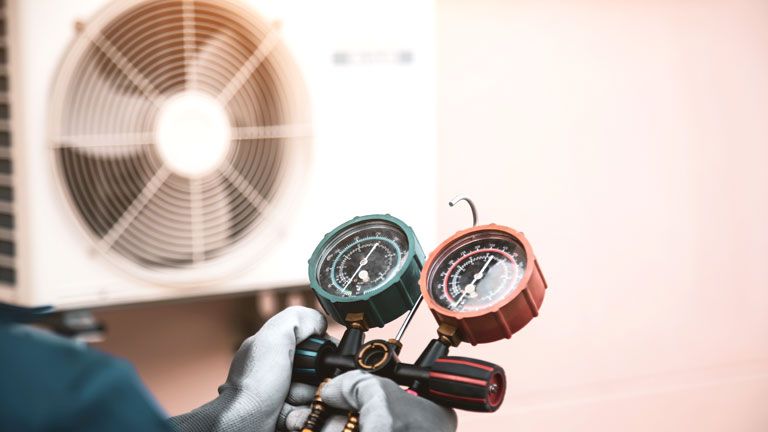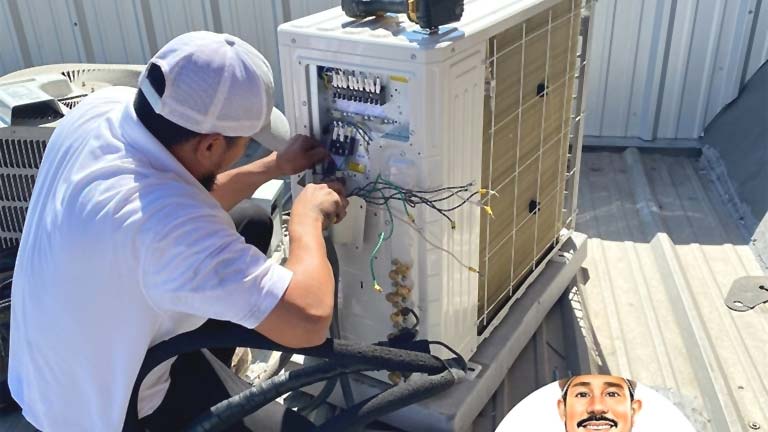
An evaporative cooler, also known as a swamp cooler, uses evaporation to cool the air. Hot and dry air is pushed across water-soaked pads, which evaporate and lower the temperature of the air, while a fan blows the cool air throughout your home.
However, like any other cooling system, a swamp cooler requires maintenance to work effectively. Here are some tips for keeping it running smoothly.
Change the Pads
The pads of the evaporative cooler are essential to its operation. They must be constantly wet in order to cool the air as it passes through them. Pads with a high mineral content will leave deposits and clog the unit, causing odors and reducing airflow. Asthma sufferers may find their symptoms aggravated in rooms where the evaporative cooler is poorly maintained.
Evaporative cooling is a popular method of climate control in many areas and for different purposes. It is used for human comfort in domestic and commercial buildings, poultry barns, and greenhouses, and it’s also a useful tool for agricultural purposes.
When evaporative cooling systems aren’t properly maintained, the pads collect dust, mold spores, airborne allergens, and other pollutants. These can circulate throughout the home, irritate occupants’ respiratory systems, and cause health problems for children, elderly residents, and anyone suffering from asthma or allergies. Cleaning and changing the pads on a regular basis helps keep the air clean, and it’s an inexpensive way to ensure that your home stays cool and comfortable.
The pads can be a good investment and last several years. However, they will need to be replaced if they become dirty. It’s important to change them regularly because the buildup of dust, minerals, and other debris will dramatically reduce the evaporative cooling system’s effectiveness.
You should use a high-quality pad material woven with natural fibers that comply with environmental pollution regulations. It should also be resistant to rot and have a flute angle of 45 degrees. It’s best to measure the dimensions of the existing pad before purchasing replacement pads so that you can prepare them correctly.
Turn off the unit and disconnect the water pump to change the pads. Remove the front panel of the evaporative cooler, and then unscrew the top panel and pull it away to expose the pads. If the pads look wet or smell mildew, replace them immediately. If you’re using nonrigid pads, such as those made from aspen or synthetic fibers, you may need to cut them with a utility knife before re-installing them.
Clean the Unit
Evaporative cooling systems work differently from air conditioning. Instead of refrigerating the air, they evaporate it using a water pump and a series of ducts connecting to the standing or window unit throughout the home. Evaporative coolers can consume up to a quarter of the energy that air conditioning uses. This makes it important to keep your evaporative cooling system clean and functioning efficiently.
A regular cleaning routine of your evaporative cooler is the best way to ensure it continues cooling your home throughout the summer. Regular cleanings can remove dirt, dust, and debris from the ductwork and air filter, which will improve your evaporative cooling system’s ability to circulate fresh air through your home.
Changing your evaporative cooling pads at least once per season is recommended. However, if you use your swamp cooler regularly, you may need to change them more often. You can clean your swamp cooler’s cooling pads by submerging them in a solution of water and vinegar (50-50) for 30-60 seconds. Then, rinse them with clean water and let them dry before using them again.
Similarly, you should also clean the interior of your evaporative cooler once a month to prevent the buildup of minerals and other contaminants. This can be done by wiping down the surface of the evaporative cooler with a soft cloth and clean water and cleaning the water tank. A clean water tank will make sure that the evaporative cooling pads are always properly hydrated, which can lead to improved evaporative cooling efficiency.
Aside from cleaning the evaporative cooler, you can also help the machine work more efficiently by adding a dehumidifier to your house. A dehumidifier will pull moisture out of the air and into its water tank until it is empty, which can significantly improve your evaporative cooling system’s efficiency.
Once summer ends, you should prepare your evaporative cooling system for winter by thoroughly cleaning and draining the unit before storage. This will ensure that the unit and its cooling pads are dry and ready to be used again next spring.
Check the Water Level
Evaporative cooling works by absorbing sensible heat from the air using water. The water vapor into the surrounding air then releases this heat. This cools the air, but the process also absorbs moisture from the surrounding air as well. This is why keeping your evaporative cooler’s water tank and pads clean and full of fresh, high-quality water is important.
Depending on your unit, the water tank will need to be filled and cleaned regularly for it to work correctly. The optimum water level is around three inches of water. To determine the optimum water level in your unit, consult the user manual or any markings inside the tank. You should check the water level of your evaporative cooler every few weeks throughout summer to ensure the unit has enough water to run properly.
If the water level is too low, then it can cause damage to the pump. This can be an expensive repair and may require the system to be refilled completely. In addition to this, the low water level can affect the performance of your evaporative cooling system.
The water that is pushed to the evaporative cooling pads is taken from a reservoir. Over time, this reservoir can become contaminated with mineral deposits. These can negatively impact the effectiveness of the system and the quality of the air that is pushed into the house. It is important to clean the water tank on a regular basis with a wire brush and mild soap and water to prevent these deposits from building up.
Many homeowners encounter a common issue with their evaporative cooling systems: water leakage. This usually happens due to incorrect unit storage during the winter, where the evaporative cooler is not drained, the pad is removed, and the system is covered properly. This can result in water leaking into the unit’s internal components, which can lead to serious electrical problems.
One of the best ways to avoid these issues is to have a professional service check carried out on your evaporative cooling system on a regular basis. A professional will be able to identify any issues that are occurring and provide the necessary repairs to keep your evaporative cooling running smoothly.
Change the Filter
The air filter is an important part of your evaporative cooling system. It is designed to filter out dust and debris that would otherwise get into the system and reduce the effectiveness of the machine. Make sure that the filter is clean and replace it when needed. Keeping your evaporative cooler clean will improve the efficiency of the machine and extend its lifespan.
Another great way to keep your evaporative cooler running smoothly is to use a dehumidifier in your home. This will take the excess moisture out of the air and make it much easier for your swamp cooler to evaporate. This will help make your house feel much more comfortable on a hot day and also boost your swamp cooler performance.
Changing the water in your evaporative cooler once a week is also a good idea. You can do this using the drain plug in the bottom of the unit, and you should also clean the water tank. This will help to prevent a build-up of minerals from hard water.
In addition to changing the water and cleaning the unit, you should also make sure that the evaporative cooler is properly winterized at the end of each season. This will include turning off the unit and unplugging it, disconnecting the water line, cleaning the filters, water reservoir, and exterior of the unit, and letting everything dry out before storing it.
If you are unsure how to perform these maintenance tasks on your evaporative cooler, it is best to call an air conditioning expert for advice. Doing so will save you time and money in the long run, as a damaged evaporative cooler can cost you more to operate.
Having your evaporative cool system checked by an air conditioning specialist is a great way to ensure it will work at its best all summer. They can check the system for leaks, remove salt build-up, set the optimum bleed-off rate, and clean or replace the filter pads.




